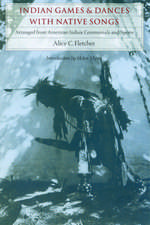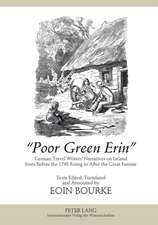Situational Identities along the Raiding Frontier of Colonial New Mexico: Historical Archaeology of the American West
Autor Jun U. Sunserien Limba Engleză Hardback – 31 ian 2018
Situational Identities along the Raiding Frontier of Colonial New Mexico examines pluralistic communities that navigated between colonial and indigenous practices to negotiate strategic alliances with both sides of generations-old conflicts. The rich history of the southwestern community of Casitas Viejas straddles multiple cultures and identities and is representative of multiple settlements in the region of northern New Mexico that served as a “buffer,” protecting the larger towns of New Spain from Apache, Navajo, Ute, and Comanche raiders. These genízaro settlements of Indo-Hispano settlers used shrewd cross-cultural skills to survive.
Researching the dynamics of these communities has long been difficult, due in large part to the lack of material records. In this innovative case study, Jun U. Sunseri examines persistent cultural practices among families who lived at Casitas Viejas and explores the complex identities of the region’s communities. Applying theoretical and methodological approaches, Sunseri adds oral histories, performative traditions of contemporary inhabitants, culinary practices, and local culture to traditional archaeology to shed light on the historical identities of these communities that bridged two worlds.
Researching the dynamics of these communities has long been difficult, due in large part to the lack of material records. In this innovative case study, Jun U. Sunseri examines persistent cultural practices among families who lived at Casitas Viejas and explores the complex identities of the region’s communities. Applying theoretical and methodological approaches, Sunseri adds oral histories, performative traditions of contemporary inhabitants, culinary practices, and local culture to traditional archaeology to shed light on the historical identities of these communities that bridged two worlds.
Din seria Historical Archaeology of the American West
-
 Preț: 390.71 lei
Preț: 390.71 lei -
 Preț: 319.27 lei
Preț: 319.27 lei -
 Preț: 175.65 lei
Preț: 175.65 lei -
 Preț: 358.46 lei
Preț: 358.46 lei -
 Preț: 500.33 lei
Preț: 500.33 lei -
 Preț: 461.34 lei
Preț: 461.34 lei -
 Preț: 466.06 lei
Preț: 466.06 lei - 23%
 Preț: 446.93 lei
Preț: 446.93 lei
Preț: 392.05 lei
Nou
Puncte Express: 588
Preț estimativ în valută:
75.03€ • 76.84$ • 62.41£
75.03€ • 76.84$ • 62.41£
Carte tipărită la comandă
Livrare economică 18 martie-01 aprilie
Preluare comenzi: 021 569.72.76
Specificații
ISBN-13: 9780803296398
ISBN-10: 0803296398
Pagini: 240
Ilustrații: 3 photographs, 16 illustrations, 5 maps, 4 tables, 39 graphs, index
Dimensiuni: 152 x 229 x 24 mm
Greutate: 0.51 kg
Editura: Nebraska
Colecția University of Nebraska Press
Seria Historical Archaeology of the American West
Locul publicării:United States
ISBN-10: 0803296398
Pagini: 240
Ilustrații: 3 photographs, 16 illustrations, 5 maps, 4 tables, 39 graphs, index
Dimensiuni: 152 x 229 x 24 mm
Greutate: 0.51 kg
Editura: Nebraska
Colecția University of Nebraska Press
Seria Historical Archaeology of the American West
Locul publicării:United States
Notă biografică
Jun U. Sunseri is an assistant professor of anthropology at the University of California, Berkeley.
Cuprins
List of Figures
List of Tables
Acknowledgements
Chapter 1. Standing Fast in the Middle Ground
Community Research Mandates as a Privilege to Earn for Historical Archaeology
A Spanish Colonial Project in a Native American Landscape
(Un)documented New Mexico
Previous Archaeological Research
Chapter 2. Digging Out Community
Picturing the Cast(a) of the Drama in Northern New Mexico
Frontline Families and Opportunities
A Turning Point on a Critical Frontier
Viewing Research on the Borderlands from a Distance
Borderlands Identities as Strategy
A Historical Archaeology of Identity as a Complex of Possibilities
Concepts of Homescape and Hearthscape
Chapter 3. Homescape
Landscape and Identity
Maps and Mappings
The Tactical Homescape
The Engineered Homescape
Evaluating Topographic Space for Potential as Agricultural Place
Modeling Hydrodynamics of Acequia Irrigation
Palimpsests of Place Along the Rito Colorado
Landscape Dimensions in Dialogue
Chapter 4. Hearthscape Tools
Pottery as Foodway Toolkits
Who made these pots?
Typologies and Historic New Mexican Pottery
Choosing Clay for Making Pots
Transformations of Clay into Tools
The Thermodynamic Art of Firing
Pots in Performance
A Process of Identity
Chapter 5. Hearthscape Ingredients
Grazing to Gravy
What Animals Were Part of Life at Casitas?
Creation of the Faunal Archaeological Record
Animal Bodies Becoming Portions
Transformations into Food
Tool Marks and Burning
How was Meat Portioned and Consumed?
Hearthscape Evidence in Dialog
Chapter 6. Historical Archaeology of a Place beyond Labels
Foodways Stages of Production and Consumption
Production Practices Related to Consumption
Use and Disposal
Hearthscape Trends Across the Plazuela
Tactical and Engineering Perspectives on Homescape Practices
Complicating Identity on the Frontier By Putting Scales in Dialogue
EPILOGUE: Protecting a Guardian of the Frontier
New Directions for Future Research
Archaeology and Preservation as Memory, Performance, and Political Action
REFERENCES CITED
List of Tables
Acknowledgements
Chapter 1. Standing Fast in the Middle Ground
Community Research Mandates as a Privilege to Earn for Historical Archaeology
A Spanish Colonial Project in a Native American Landscape
(Un)documented New Mexico
Previous Archaeological Research
Chapter 2. Digging Out Community
Picturing the Cast(a) of the Drama in Northern New Mexico
Frontline Families and Opportunities
A Turning Point on a Critical Frontier
Viewing Research on the Borderlands from a Distance
Borderlands Identities as Strategy
A Historical Archaeology of Identity as a Complex of Possibilities
Concepts of Homescape and Hearthscape
Chapter 3. Homescape
Landscape and Identity
Maps and Mappings
The Tactical Homescape
The Engineered Homescape
Evaluating Topographic Space for Potential as Agricultural Place
Modeling Hydrodynamics of Acequia Irrigation
Palimpsests of Place Along the Rito Colorado
Landscape Dimensions in Dialogue
Chapter 4. Hearthscape Tools
Pottery as Foodway Toolkits
Who made these pots?
Typologies and Historic New Mexican Pottery
Choosing Clay for Making Pots
Transformations of Clay into Tools
The Thermodynamic Art of Firing
Pots in Performance
A Process of Identity
Chapter 5. Hearthscape Ingredients
Grazing to Gravy
What Animals Were Part of Life at Casitas?
Creation of the Faunal Archaeological Record
Animal Bodies Becoming Portions
Transformations into Food
Tool Marks and Burning
How was Meat Portioned and Consumed?
Hearthscape Evidence in Dialog
Chapter 6. Historical Archaeology of a Place beyond Labels
Foodways Stages of Production and Consumption
Production Practices Related to Consumption
Use and Disposal
Hearthscape Trends Across the Plazuela
Tactical and Engineering Perspectives on Homescape Practices
Complicating Identity on the Frontier By Putting Scales in Dialogue
EPILOGUE: Protecting a Guardian of the Frontier
New Directions for Future Research
Archaeology and Preservation as Memory, Performance, and Political Action
REFERENCES CITED
Recenzii
"[Sunseri's] work is personal, innovative, and effective in its use of disparate sources, from scientific analysis to oral history, and provides the reader with a well reasoned and supported argument for cultural fluidity and continuation on the New Mexico colonial borderlands."—Peg Kearney, Journal of Arizona History
"Situational Identities along the Raiding Frontier of Colonial New Mexico offers a strong foundation on which to build future place-based historical archaeologies in the Southwest, deeply informed by those who have thought with the land for generations."—Valerie Bondura, Society for Historical Archaeology
"The ethnic pluralism that emerges from Sunseri's text and artifacts will resonate beyond scholarly circles, offering critical insight into contemporary issues around what it means to be 'New Mexican.'"—Dana Velasco Murillo, Western Historical Quarterly
"Situational Identities has much to offer those interested in the regional history of New Mexico, the broader history of Spanish frontier spaces, and the important work of blending methodologies across the humanities and social science disciplines."—Sean F. McEnroe, Hispanic American Historical Review
“This case makes a significant contribution to the interdisciplinary study of the Spanish borderlands, especially in New Mexico, and will set the bar for archaeological and anthropological research into genízaro communities like Casitas.”—Bonnie J. Clark, associate professor of anthropology at the University of Denver and author of On the Edge of Purgatory: An Archaeology of Place in Hispanic Colorado
“This book is a culmination of several years of innovative research at Casitas that is important because it involves local descendent communities for whom this site has great personal and historic meaning. The research is comprehensive and integrates multiple lines of evidence in an unusual way, including documentary, landscape/viewshed, architectural, zooarchaeological, and ceramic analyses.”—Barnet Pavao-Zuckerman, associate professor of anthropology at the University of Maryland and coauthor of Mission and Pueblo of Santa Catalina de Guale, St. Catherines Island, Georgia: A Comparative Zooarchaeological Analysis























